
Related
Topics
Activists around the nation are commemorating the 60th anniversary of the U.S. bombings of Hiroshima and Nagasaki. Grass-roots organizers speak about the ongoing nuclear weapons activity and community resistance. [includes rush transcript]
Sixty years after the U.S. atomic bombing of Hiroshima and Nagasaki, the United States continues to maintain the largest store of atomic weapons in the world. Saturday, August 6, peace activists around the country are participating in national days of remembrance and action at active nuclear weapons sites. In this protest preview, organizers explain the link between past and present nuclear weapons activity.
- Tara Dorabji, Tri-Valley Cares in Northern California
- Jackie Cabasso, Executive Director of the Western States Legal Foundation
- Marcus Page, of Pax Christi, New Mexico
- Frances Mindenhall, Speak Out at STRATCOM (S.O.S)
- Ralph Hutchinson, Coordinator of the Oak Ridge Environmental Peace Alliance
Transcript
JUAN GONZALEZ: Well, 60 years after the atomic bombings, the nuclear age is not over, and the United States continues to maintain the largest store of atomic weapons among the nuclear powers. Tomorrow, peace activists around the country are participating in national days of remembrance and action at active nuclear weapons sites. We asked organizers to explain the link between past and present nuclear weapons activity. Our national roundup starts with Tara Dorabji of the Tri-Valley CAREs in Northern California.
TARA DORABJI: The primary sites for the design and development of nuclear weapons. Currently, it’s the sole site to design the robust nuclear earth penetrater. Further, the Livermore lab has been named as able to double the limit of plutonium on-site to 3,080 pounds. That’s enough for at least 300 nuclear bombs right in the San Francisco Bay Area. On August 6, at 5:00 p.m., there will be a dinner rally, peace playground, and march to the gates of the Livermore lab, where people will plant seeds of change by bringing their message of hope, written on sunflowers and hanging them on the gates of Livermore lab.
JACKIE CABASSO: My name is Jackie Cabasso. I am the Executive Director of the Western States Legal Foundation. We will be going out to the Nevada test site in Nevada, which is the most bombed nation on earth. I say that because it is the Western Shoshone Nation land that was seized by he the U.S. Government in 1951, and over 900 nuclear test bombs have been exploded there. Today, sub-critical nuclear weapons tests are conducted underground, high explosives test and other aspects of nuclear weapons research and development. On Saturday evening we’ll be going out for a public witness and vigil, and some people will risk arrest in acts of symbolic resistance to ongoing preparations for the resumption of full-scale nuclear testing, as well as other aspects of nuclear weapons research and development.
MARCUS PAGE: I’m Marcus Page. I’m with Pax Christi, New Mexico. On Saturday, August 6, we have a lot of things happening at Los Alamos. Pax Christi is going to start the day off with prayer for repentance in ashes and sackcloth. People will meditating for half an hour wearing burlap sacks and sitting in ashes because of the gross sin of nuclear weapons, and the reason we’re doing this is because almost half of the U.S. warhead spending occurs in New Mexico, and the labs are heavily influencing our state’s politics. The data suggests that the political economy of nuclear weapons has damaged our state’s economic development.
FRANCES MINDENHALL: I’m Frances Mindenhall, and I’m one of the members of the committee putting together our 60th anniversary event. We call it “Speak Out at STRATCOM,” or S.O.S. STRATCOM has been always the site of the targeting of all the U.S. nuclear weapons, but since 9/11, its mission has been greatly expanded to include global strike and the space command, as well as some authority that crosses the various armed services. And this week, in The American Conservative magazine, there was a description of STRATCOM being tasked by Cheney to create a plan that would essentially bomb Iran into the Stone Age using nuclear and conventional weapons. Needless to say, we consider STRATCOM the headquarters for every military part of the neo-cons’ plan for global domination. So, we’re going to be vigiling at the gate of STRATCOM, and later we’ll hold a festival of peace in Bemus Park.
RALPH HUTCHINSON: This is Ralph Hutchinson, the coordinator of the Oak Ridge Environmental Peace Alliance in Oak Ridge, Tennessee. We’re holding our mass demonstration in Oak Ridge on the Day of Remembrance and Action, August 6, for two reasons. First, the Y12 plan in Oakridge produced the highly enriched uranium for the Little Boy bomb that destroyed Hiroshima. But secondly, the Y12 plant today continues to make thermo-nuclear weapons parts. Right now Y12 is doing the life extension upgrade on the Trident warheads so they can be certified reliable for 100 to 120 years. And with all of the talk about non-proliferation these days, it’s important that we recognize it’s not just North Korea and Iran. The world’s biggest proliferator is the United States, and Oak Ridge is one of the places where we are doing it. So we will have a day-long series of events. We will host Mr. Eiji Nakanishi who is a survivor of the Hiroshima bombing. The thrust of our message is that it’s we the people need to take responsibility for the world that we want our children to live in. If we want a nuclear-free world, we have to create it. Our leaders aren’t going to do it for us, because they’re taking us in the opposite direction. So, our mass demonstration will be to claim the future for peace.
AMY GOODMAN: Voices of resistance, people’s protests around the country this weekend on the 60th anniversary of the bombings of Hiroshima and Nagasaki.

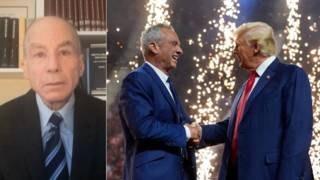

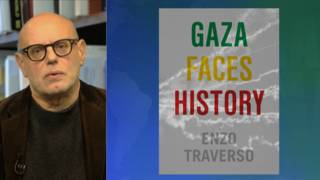
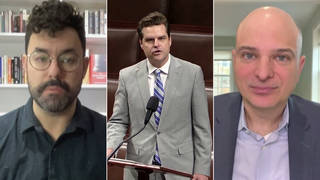





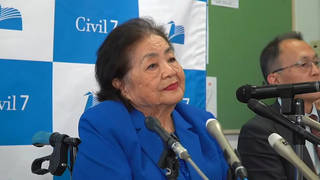
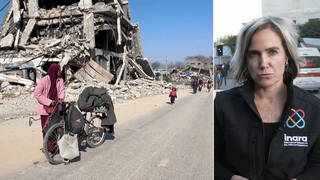
Media Options